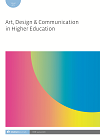
Full text loading...

Addressing the conceptual design stage as a significant part of design management, this article introduces a framework for concept generation and development in architectural design. Evolving throughout eleven years of experimentation, the framework is formulated as a graphical template to plot eight methods of concept generation, and multiple figurative and operative models for concept transformation and development. The framework is intended to be flexible and supportive of iterative cycling, while also offering an explicit, structured and systemized approach to broaden the solution scope and enhance creativity in the proposed alternatives. Developing language-based structures, the research addresses knowledge management in the initial stages of designing using interdisciplinary knowledge mapping. The research comprises a research-through-design methodology for framework development, and questionnaire surveys for its testing. The findings indicate that the framework helps designers initiate their designing process, guide them throughout the process, and generate a wide variety of creative concepts. Furthermore, the findings demonstrate that the analogy-based method is the most common one in shaping the final design products. Despite its contribution, the framework was criticized for generating too many alternatives that consume time and make decisions more difficult to make.

Article metrics loading...

Full text loading...
References


Data & Media loading...

Publication Date:
https://doi.org/10.1386/adch_00040_1 Published content will be available immediately after check-out or when it is released in case of a pre-order. Please make sure to be logged in to see all available purchase options.